ALL IN FOR SOLUTIONS
We can prevent childhood adversity & trauma
Whether you are a family member, neighbor, healthcare provider, educator, or domestic
violence advocate, we all play a role in helping to prevent trauma and help kids heal.
STRATEGIES THAT WORK
Strategies that foster safe, stable, nurturing relationships and environments for children and families can prevent adverse childhood experiences (ACEs) and help kids thrive.

FOCUS ON THE NEEDS OF KIDS AND THEIR CAREGIVERS TOGETHER. The safety and well-being of caregivers and kids are inextricably linked. Support that addresses the needs of both holistically is proven to be more effective.

LISTEN AND FOLLOW THE LEAD OF THE PEOPLE MOST AFFECTED. Their experiences and expertise are critical to shaping effective strategies for healing and prevention.

ADVOCATE FOR RACIAL JUSTICE. The evidence
is clear that systemic racism and poverty fuel toxic stress
and negatively impact health and well-being. Black, Indigenous and some people of color are 2X more likely to
experience repeated trauma by the age of three. If you are
a provider, focusing your work on closing gaps in racial
disparities can be transformative.

ADDRESS MULTIPLE CAUSES OF TRAUMA.
Adverse childhood experiences (ACEs) such as exposure to domestic violence, abuse, neglect or other significant life
stressors like poverty and discrimination are often
co-occurring and do not happen in isolation. The evidence is clear that to end childhood adversity and trauma, we must support families in more holistic ways that address multiple
forms of adversity.

ENSURE FAMILIES HAVE JUST AND EQUITABLE ACCESS TO FOOD, HOUSING, QUALITY HEALTHCARE AND CONDITIONS
FREE FROM VIOLENCE.
When families’ basic needs
are met, stress and burden are reduced. This is an essential
strategy for preventing and addressing ACEs.

STRENGTHEN ECONOMIC SUPPORTS FOR
FAMILIES IN SUSTAINABLE WAYS. If you are a
provider, neighbor, friend or loved one, advocating for
policies like paid family leave and other early life supports
can be transformative for the health and well-being of
families harmed by trauma.

ENSURE A STRONG START FOR CHILDREN. Early detection and early intervention are proven to work.
In the first five years of life, children’s brains form more than
1 million new neural connections every second. It is a unique
window for healing and prevention, and e orts that focus
on this stage of life – as windows of opportunities to
support whole families – are effective.

HELP TO STRENGTHEN CONNECTIONS. Social,
spiritual and community connections are centuries-old
strategies that can help to buffer against the effects of
repeated traumatic stress, enable positive interactions, and
other activities and communities that foster joy.

ADVOCATE FOR JUST, EQUITABLE AND
PREVENTION-ORIENTED POLICIES. Policy and
norms matter. Whether you are a neighbor or a provider,
advocacy is critical to ensuring national, state, and local
policies that help kids and families thrive. Advocacy can
make an important di erence in funding and advancing
proven strategies for prevention and healing.
All In for Kids virtual series is brought to you by Genentech, with support from: Blue Shield of California Foundation, Lisa Stone Pritzker Family Foundation, The Susie Sarlo Family Fund, and Zellerbach Family Foundation.
Sources: 1. https://www.cdc.gov/violenceprevention/pdf/preventingACES.pdf 2. Watamura, S. and Kim, P. (2015). Two Open Windows: Infant and Parent Neurobiologic Change. The Aspen Institute. Retrieved from: https://ascend.aspeninstitute.org/resources/two-open-windows-infant-and-parent-neurobiologic-change-2/ 3. Brown, T. and Wyatt, J. (2010, Winter). Design thinking for social innovation. Stanford Social Innovation Review. Retrieved from https://ssir.org/articles/entry/design_thinking_for_social_innovation# 4. Van Dyke, M. E., Baumhofer, N. K., Slopen, N., Mujahid, M. S., Clark, C. R., Williams, D. R., & Lewis, T. T. (2020). Pervasive Discrimination and Allostatic Load in African-American and White Adults. Psychosomatic Medicine , 82 (3), 316-323. 5. O’Connor, M., Slopen, N., Becares, L., Burgner, D., Williams, D. R., & Priest, N. (2020). Inequalities in the distribution of childhood adversity from birth to 11 years. Academic Pediatrics , 20 (5), 609-618. 6. Anekwe, L. (2020). Interview with David Williams. “Harnessing the outrage: it's time the NHS tackled racial bias.” British Medical Journal , 368, m341. 7. Williams, D. R., Lawrence, J. A., Davis, B. A., & Vu, C. (2019). Understanding How Discrimination Can Aect Health. Health Services Research , 54 (S2), 1374-1388. 8. Center on the Developing Child at Harvard University (2017). Three Principles to Improve Outcomes for Children and Families. http://www.developingchild.harvard.edu 9. National Scientific Council on the Developing Child (2007). The Science of Early Childhood Development: Closing the Gap Between What We Know and What We Do. Retrieved from www.developingchild.harvard.edu. 10. Scherzer AL, Chhagan M, Kauchali S, Susser E. Global perspective on early diagnosis and intervention for children with developmental delays and disabilities. Dev Med Child Neurol. 2012 Dec;54(12):1079-84. doi: 10.1111/j.1469-8749.2012.04348.x. Epub 2012 Jul 13. PMID: 22803576; PMCID: PMC3840420. 11. Bear, L. M. (2004). Early identification of infants at risk for developmental disabilities. Pediatric Clinics of North America, 51(3), 685. 12. Blauw‐Hospers, C. H., & Hadders‐Algra, M. (2005). A systematic review of the effects of early intervention on motor development. Developmental medicine & child neurology, 47(6), 421-432. 13. Center on the Developing Child (2015). The Science of Resilience (InBrief). Retrieved from www.developingchild.harvard.edu. 14. Ungar, M. (2008). Resilience across cultures. The British Journal of Social Work, 38(2), 218-235.
